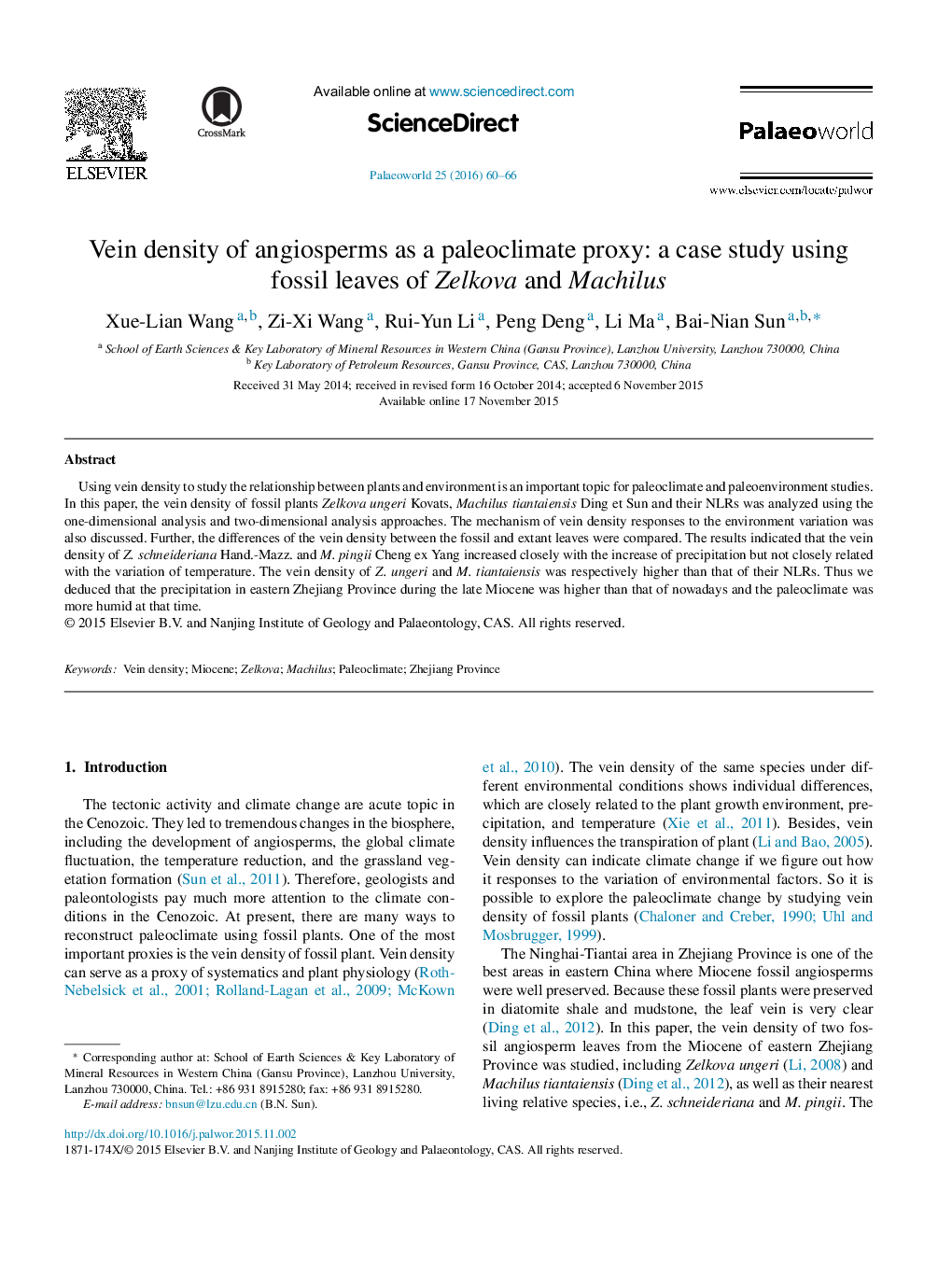| Article ID | Journal | Published Year | Pages | File Type |
|---|---|---|---|---|
| 6448591 | Palaeoworld | 2016 | 7 Pages |
Abstract
Using vein density to study the relationship between plants and environment is an important topic for paleoclimate and paleoenvironment studies. In this paper, the vein density of fossil plants Zelkova ungeri Kovats, Machilus tiantaiensis Ding et Sun and their NLRs was analyzed using the one-dimensional analysis and two-dimensional analysis approaches. The mechanism of vein density responses to the environment variation was also discussed. Further, the differences of the vein density between the fossil and extant leaves were compared. The results indicated that the vein density of Z. schneideriana Hand.-Mazz. and M. pingii Cheng ex Yang increased closely with the increase of precipitation but not closely related with the variation of temperature. The vein density of Z. ungeri and M. tiantaiensis was respectively higher than that of their NLRs. Thus we deduced that the precipitation in eastern Zhejiang Province during the late Miocene was higher than that of nowadays and the paleoclimate was more humid at that time.
Keywords
Related Topics
Physical Sciences and Engineering
Earth and Planetary Sciences
Palaeontology
Authors
Xue-Lian Wang, Zi-Xi Wang, Rui-Yun Li, Peng Deng, Li Ma, Bai-Nian Sun,
